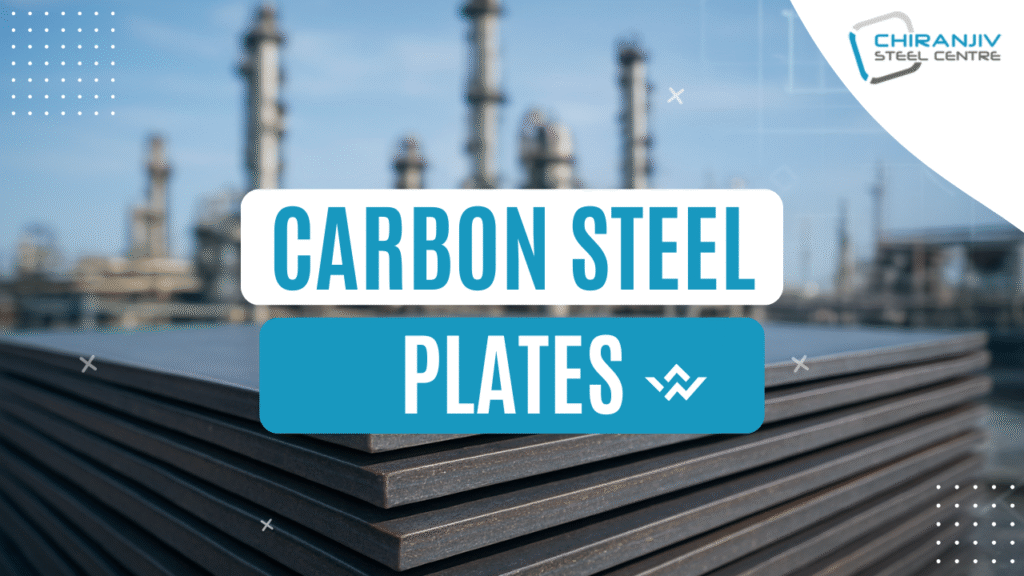When it comes to construction materials, carbon steel plates are widely regarded as the go-to choice for a wide range of applications, from beams to frames and structural components. Due to their strength, affordability, and versatility, carbon steel plates are especially useful in 2025’s evolving construction market. Whether you’re working on a residential building, bridge, or high-rise, understanding the benefits of carbon steel plates is essential.
In this blog, we’ll dive into why carbon steel plates are ideal for construction projects in 2025, focusing on cost efficiency, tensile strength, and their widely accepted standards in the industry.

Why Choose Carbon Steel Plates for Construction in 2025?
Carbon steel plates are the backbone of the construction industry, offering benefits that make them a clear choice for most structural applications. Here’s why they’re particularly valuable for 2025 construction projects:
Strength and Durability for Heavy Loads
Carbon steel plates, especially those graded A36 and A572, provide unmatched strength for structural integrity. Whether building a bridge or creating high-strength beams, these plates ensure the reliability of the overall structure under heavy loads.
Cost-Effective Solution for Builders
In a world where budget management is crucial, carbon steel plates provide a highly affordable solution. Compared to materials like stainless steel or alloy plates, carbon steel offers a high strength-to-cost ratio, making it perfect for large-scale construction projects.
Versatility in Application
From foundation work to steel framing, carbon steel plates are extremely versatile. Hot-rolled and cold-rolled plates serve different purposes, with hot-rolled plates used for large structural pieces and cold-rolled plates used for detailed applications requiring smooth finishes.
Common Applications of Carbon Steel Plates in Construction
Carbon steel plates have a wide range of uses in the construction industry. Some of the most common applications include:
- Steel Beams and Columns: A36 carbon steel plates are frequently used to produce the beams and columns that provide vertical and horizontal support.
- Structural Frames: Carbon steel plates are essential for creating the framework of buildings, bridges, and other large infrastructure projects.
- Foundation and Base Plates: For industrial and commercial buildings, carbon steel plates are used for the foundations and supporting bases.
Key Advantages of Using Carbon Steel Plates for Construction Projects
- High Tensile Strength
Carbon steel plates offer superior tensile strength, making them ideal for load-bearing structures like bridges and skyscrapers. - Availability and Accessibility
Being one of the most commonly used materials in the industry, carbon steel plates are widely available from suppliers and manufacturers. - Compliance with Industry Standards
Carbon steel plates meet essential industry standards like ASTM A36 and ASTM A572, ensuring quality and consistency in all construction applications.
Carbon Steel Plate Pricing for Construction Projects in 2025
WWhen it comes to budgeting for construction materials, carbon steel plates offer a competitive price range. Prices can vary based on grade, thickness, size, and market conditions. Here’s an overview of what you can typically expect for different carbon steel plate standards in 2025:
- A36 Carbon Steel Plates: $500 – $800 per ton
Widely used in construction for general structural purposes, A36 plates offer an affordable option for a wide range of applications, from beams to frames. - A572 Carbon Steel Plates: $700 – $1,100 per ton
Known for its high strength, A572 plates are commonly used in bridges, buildings, and other heavy-duty applications. - SA 516 Carbon Steel Plates: $800 – $1,200 per ton
SA 516 Grade 70 Plates is often used in the manufacture of pressure vessels, boilers, and heat exchangers due to its excellent weldability and strength in high-temperature applications. - SA 537 Class 1 Carbon Steel Plate: $900 – $1,400 per ton
Commonly used in pressure vessel applications, SA 537 Class 1 plates offer high toughness and are perfect for applications involving high-pressure and low-temperature environments.
These prices are subject to change based on steel market fluctuations, supplier rates, and material availability. For large-scale or bulk construction projects, it’s always a good idea to reach out to a trusted supplier for custom pricing or discounted rates.
Conclusion: The Future of Carbon Steel Plates in Construction
As the construction industry continues to evolve in 2025, carbon steel plates remain a top choice due to their cost-effectiveness, strength, and versatility. Whether for large-scale infrastructure or residential projects, carbon steel plates provide the reliability and performance that construction companies need.
If you’re sourcing carbon steel plates for your next project, make sure to contact trusted suppliers to get the best quality and pricing.
